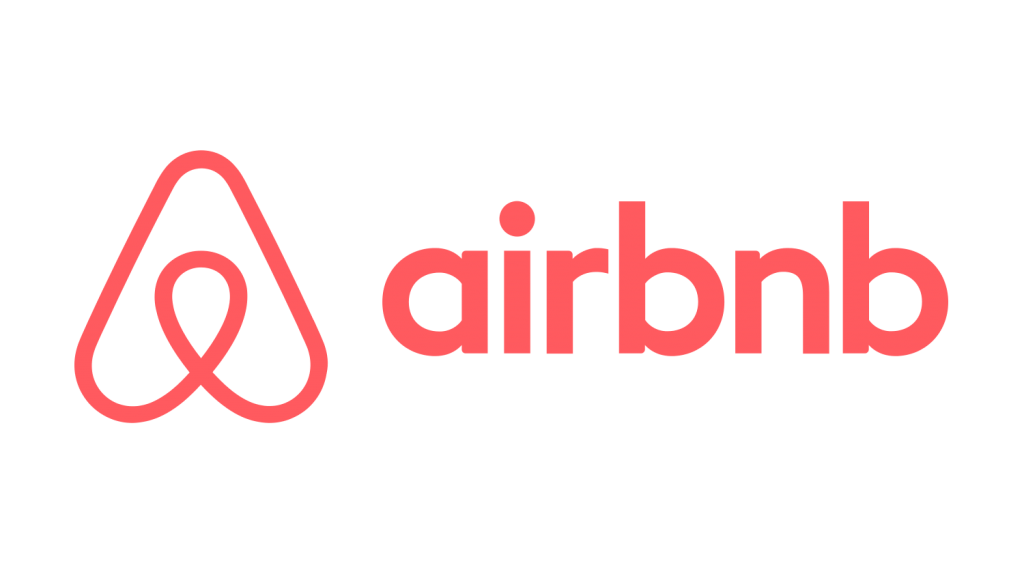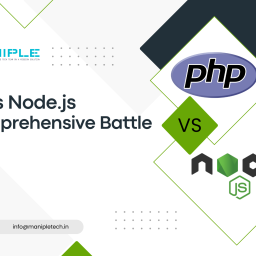
INTRODUCTION
In the fast-changing world of web development, it’s crucial to stay updated. Especially in the front-end development field, there have been big improvements recently.
You might be wondering, with so many JavaScript options available, why choose React.js? The reason is simple. In today’s complex web landscape, not all libraries can keep up. As web applications become more dynamic, some solutions struggle. What you need is something strong yet adaptable.
And that something is React.js. It stands out from the crowd with its fantastic features and a vibrant community of developers. In this article, we’ll explore why React.js is the best choice for front-end development.
Let’s dive into the world of ReactJS in this article and discover its potential benefits. Whether you’re a stakeholder, developer, or end user, this piece will help you understand this powerful tool.
What is React JS?
Before we dive into the specifics, let’s understand what React.js is. React.js, often referred to as React, is an open-source JavaScript library for building user interfaces (UIs). It was developed and is maintained by Facebook and a community of individual developers and companies. React allows developers to create reusable UI components and manage the state of those components, making it an efficient tool for building interactive and dynamic user interfaces.
- Here is the official Website of React - https://react.dev/
- Here you can find the official documentation - https://legacy.reactjs.org/docs/getting-started.html
- Here you can find Existing questions for Reactjs - https://stackoverflow.com/questions/tagged/reactjs
Evolution of ReactJS
React’s journey through its history is quite a fascinating one. Let’s take a look at the key milestones:
- 2011 – The Beginning: React’s story starts with Jordan Walke, a software engineer at Facebook. He laid the foundation for React by creating an early prototype known as “FaxJS” while working on Facebook’s advertising platform.
Image of the Initial Author – Jordan Walke - 2013 – Going Public: React was officially introduced to the public at a JavaScript conference in May 2013. Facebook’s engineers decided to open-source React, making it available to a wider developer community. It was a response to the challenges they faced while building complex and dynamic user interfaces for web applications.
- 2014 – The Virtual DOM: In 2014, React gained significant attention by introducing the concept of the “Virtual DOM.” This innovation transformed how web pages were updated. Instead of re-rendering entire pages, React updated only the specific parts of a page that had changed, resulting in significantly faster user experiences.
- 2015 – Expanding Beyond the Web: React’s influence extended beyond the web with the launch of React Native in 2015. This framework allowed developers to build mobile applications using React. It was a significant step toward using a single codebase to create apps for both web and mobile platforms.
- 2017 – Fiber Reconciliation Algorithm: In 2017, React introduced the Fiber reconciliation algorithm. This enhanced rendering and made it more predictable and responsive, especially in complex applications.
- 2020 – Concurrent Mode: React took another step forward in 2020 with the introduction of Concurrent Mode. This feature allowed React to efficiently handle asynchronous tasks, further improving the user experience in web applications with dynamic content.
- 2022 – React 18 Released: React.js’s latest version, React 18, was released in March 2022, & it comes with some new features that make it more efficient & practical to work with. Some of the notable features of React 18 include automatic batching, server components, & the ability to define asynchronous rendering boundaries, which allows for better performance optimization.
Throughout its history, React has gained widespread adoption and has evolved to meet the ever-changing demands of modern web development. Supported by Facebook and a thriving community of developers, React has become a foundational tool for building user interfaces in both web and mobile applications. Its core strengths lie in its component-based architecture, declarative syntax, and a strong focus on optimizing performance.

Jordan Walke
Jordan Walke The Author of React
Why it’s called “Reactjs”?
The reason behind the name “React” for Facebook’s JavaScript library is its focus on responding swiftly to changes in data and user interactions. React is designed to efficiently update the user interface whenever there’s a change in the application’s state.
In a React application, when the data or state changes, React springs into action, swiftly updating only the parts of the user interface affected by these changes. It accomplishes this using its virtual DOM and reconciliation algorithm. This stands in contrast to traditional approaches where developers had to manually update the DOM, which often led to inefficiencies and complexities in managing intricate user interfaces.
The name “React” mirrors the library’s fundamental concept: it reacts promptly and effectively to changes in a way that’s predictable and streamlined. This name perfectly captures the essence of the technology. The “.js” in “React.js” simply tells us that it’s a JavaScript library, setting it apart from libraries and frameworks created for other programming languages.
Is it a Library or Framework?
There’s a common debate about whether React should be classified as a framework or a library. To simplify, React falls under the category of a library. Sometimes, people use the terms “library” and “framework” interchangeably, but there are distinctions. Frameworks come with specific features:
- Frameworks offer pre-built tools, standards, and templates to accelerate the development of applications, which libraries typically do not offer.
- Frameworks take charge of determining when and how to utilize libraries in your code.
- Frameworks establish rules and guidelines for writing code and organizing files and folders.
- Frameworks include a consistent set of APIs, compilers, toolsets, and integrated libraries.
- When you work with a framework, it’s akin to handing over control to the framework itself. The framework manages the flow and decides when to execute your code. Conversely, when you use libraries, you retain more control over how your application functions.
React doesn’t precisely fit these criteria, which is why it’s categorized as a library rather than a framework. It doesn’t provide all the pre-built tools and stringent guidelines that are typically associated with frameworks. Instead, it empowers developers with greater flexibility and control over their code.
How it’s Different from traditional HTML/CSS Templates?
React.js takes a notably different approach compared to traditional HTML/CSS templates:
- Component-Based Architecture: React promotes the creation of applications using reusable components. Unlike traditional templates that often become large and complex, React components are self-contained building blocks of functionality and design. This component-based approach encourages code reusability and makes it easier to manage and maintain your code.
- Virtual DOM: React introduces the concept of a virtual DOM, which is a lightweight representation of the real DOM (Document Object Model). This virtual version allows React to smartly update only the parts of the DOM that have changed, reducing the need for extensive re-rendering. In contrast, traditional templates often involve manual manipulation of the DOM, which can lead to errors and slower performance.
- Declarative Syntax (JSX): React uses JSX, an extension of JavaScript, to define user interfaces straightforwardly. Traditional HTML/CSS templates often mix the presentation and logic. In contrast, JSX enables developers to simply describe how the user interface should look at any given moment, abstracting the intricate details of DOM manipulation.
In summary, React simplifies the development process, makes the code more manageable, and significantly boosts the performance and responsiveness of web applications. It’s a game-changer for creating dynamic and efficient user interfaces.
Key Statistics
In the year 2023, a survey revealed that approximately 40.58 per cent of the participants mentioned that they use React.js for their web development projects.
Interestingly, Node.js secured the top spot among web frameworks, with a significant 43.65 per cent usage rate. However, when it comes to other frameworks like Angular, Vue, and Next.js, React.js remains ahead of the pack, making it a preferred choice for developers in the field of web development.
Key Benefits of React JS
React JS brings a multitude of advantages that set it apart in the world of front-end JavaScript development. To grasp why React is a standout choice among other frameworks and libraries, let’s explore its key benefits, categorized for everyone’s ease of understanding.
1. For Everyone:
- Optimized Performance: React’s exceptional performance is driven by its virtual DOM and efficient reconciliation algorithm. It works by reducing the need to re-render the entire webpage, resulting in quicker loading times.
- Maintainability: React’s component-based structure simplifies the task of maintaining and expanding applications. Each component has its own set of rules, making debugging and code management easier.
- Speed Boost: React allows developers to use different parts of their application both on the client-side and server-side, ultimately speeding up the development process. In other words, various developers can work on individual parts without affecting the application’s overall logic.
- Flexibility and Savings: Compared to other front-end frameworks, React’s modular structure provides flexibility and ease of maintenance. This flexibility saves businesses significant time and cost.
- SEO-Friendly: Search engine optimization is crucial for online success. React, with its swift rendering capabilities, reduces page load times, making it more likely for an app to secure a high rank on Google’s search results. According to Moz, faster rendering speed and lower page load times positively impact Google rankings, making React an SEO-friendly choice for businesses.
2. For Developers:
- Ease of Learning: React stands out for its simplicity compared to other popular front-end frameworks like Angular and Vue. Its user-friendliness has been a major factor in its rapid adoption. This ease of learning accelerates project development, as technology or frameworks that are harder to grasp can slow down the development process. We tend to gravitate towards what’s easier to learn, and React’s simplicity has made it an attractive choice for businesses and major brands.
- Reusable Components: A standout feature of React JS is the ability to reuse components. This is a time-saver for developers because they can avoid writing repetitive code for similar features. Moreover, any changes made in one part of the application won’t disrupt other components. This modularity is a significant advantage.
- Robust Ecosystem: React boasts a rich ecosystem, not just in terms of packages but also extensions. These extensions enhance the coding environment, making it more comfortable for developers and aiding in code readability. For example, VS Code supports a variety of extensions for React, and there are Chrome browser extensions that help trace components and work with the Redux store.
- Vibrant Community Support: Similar to Angular, React enjoys strong community support, a compelling reason to consider it for your project. The React community is active and growing. Each day, numerous individual React developers contribute to making React a better front-end framework. As evidence of this support, React JS has garnered 214,000 stars on GitHub and has 1,630 regular contributors. Additionally, experts regularly share free React tutorials on platforms like YouTube and write comprehensive articles and blog posts about React on the internet. If you ever encounter challenges while using React, you can turn to QA sites like Stack Overflow and Quora, where React experts provide reliable solutions to help you overcome obstacles. This robust community support ensures you’re never alone in your journey with React.
3. For Stakeholders:
- Scalability: React’s track record is impressive, with tech giants like Facebook and Instagram relying on it. This demonstrates React’s ability to handle large-scale applications and its reputation for reliability.
- Mobile App Development: If you believed React was solely for web development, think again. Facebook has extended the framework to build mobile native applications for both Android and iOS platforms. React’s versatility extends to the mobile world, making it a robust choice for stakeholders invested in multi-platform development.
4. For End Users:
- Enhanced User Experience: React contributes to a superior user experience. Thanks to its virtual DOM and efficient updates, interactions are smoother, and the interface is more responsive. Users benefit from applications built with React through faster and more seamless interactions.
Top 5 Strong Competitors or Alternatives of Reactjs in 2023
Currently, React is extremely popular, and for good reasons. It is simple and concise. However, looking at some alternatives is a good idea too
- Angular (Angular 2+): Developed by Google, Angular is a comprehensive front-end framework that provides a complete ecosystem for building web applications. It emphasizes a structured and opinionated approach to application architecture.
- Vue.js: Vue.js is a progressive framework for building user interfaces. It’s known for its simplicity and ease of integration, making it an excellent choice for developers looking for a lightweight yet powerful framework.
- Svelte: Svelte is a relatively new front-end framework that compiles components into highly efficient vanilla JavaScript during the build process. It is gaining popularity for its small bundle sizes and excellent performance.
- Ember.js: Ember.js is a framework that focuses on convention over configuration and provides a robust set of tools for building ambitious web applications. It’s known for its strong opinions on how applications should be structured.
- Preact: Preact is a lightweight alternative to React that offers a similar API and developer experience. It’s designed to have a smaller footprint, making it a good choice for applications where performance and size are critical.
ReactJS vs VueJS Vs AngularJS
In the world of web development, there’s a multitude of front-end frameworks to choose from. However, three have risen to the top as the most popular and widely adopted options: React, Angular, and Vue. These frameworks are essential for designing user interfaces on websites and web applications. Selecting the right framework is a crucial decision because it significantly impacts the success of your project. In this discussion, we’ll highlight key aspects you should carefully think about before making your choice for an upcoming project.
ReactJS
- Library or Framework: React is a JavaScript library for building user interfaces. It focuses primarily on the view layer of an application.
- Learning Curve: It has a relatively short learning curve, making it accessible for new developers.
- Component-Based: React promotes a component-based architecture, enabling the creation of reusable UI components.
- Virtual DOM: React uses a virtual DOM and a reconciliation algorithm to optimize performance.
- Community: It has a large and active community, offering extensive support and resources.
AngularJS:
- Framework: AngularJS is a comprehensive framework for building dynamic web applications.
- Learning Curve: It has a steeper learning curve compared to React and Vue due to its complexity.
- Full-Featured: AngularJS is a full-featured framework that includes a lot of tools and functionality for front-end development.
- Two-Way Data Binding: AngularJS offers two-way data binding, simplifying data management.
- Mature Ecosystem: It has a mature ecosystem and is widely used in enterprise-level applications.
Vue.js:
- Framework: Vue.js is a progressive framework for building user interfaces, allowing developers to adopt it incrementally.
- Learning Curve: Vue’s gentle learning curve makes it suitable for both beginners and experienced developers.
- Component-Based: Like React, Vue also uses a component-based architecture, facilitating code reusability.
- Flexibility: Vue provides flexibility in terms of integration and can be used for various project types.
- Ecosystem: While smaller than React’s, Vue’s ecosystem is growing steadily with a supportive community.
Picking the right front-end framework for your project can be a challenging decision. Each of the three frameworks – ReactJS, AngularJS, and VueJS – has its own set of advantages and disadvantages.
React is more like a UI-building toolkit, Vue.js offers a flexible framework approach with easy learning, and AngularJS is a full-fledged framework with a steeper learning curve. Your choice among them should align with the specific needs of your project, the skills of your team, and the goals you have in mind for development. It’s about finding the best fit for your unique project requirements.
Top companies that use ReactJS for their Website
Numerous companies have harnessed React JS and witnessed substantial gains in their business performance. Of course, Instagram, Facebook and Meta are using Reactjs but React JS is the also choice of major players like Netflix, Dropbox, AirbBNB and more. They leverage it not only to enhance customer satisfaction but also to maintain the strength of their brand in the market.
Where ReactJS can be used?
React.js is a flexible and versatile development tool that finds applications in many industries and for a variety of website types. Here are some areas where React.js shines:
- Complex web applications
- Cross-platform mobile applications
- AR/VR applications
- Social media applications
- eCommerce applications
- Entertainment
- Gaming
- Others: Travel and Tourism, News and Media, Healthcare, Financial Services, Education, Blogs, Real Estate etc…
And the list doesn’t stop here. React.js is adaptable to various other industries and website types, including Travel and Tourism, News and Media, Healthcare, Financial Services, Education, Blogs, Real Estate, and more. Its versatility, speed, and component-based structure make it a top choice for a wide range of web development projects.
Introduction to Next.js
React is indeed a fantastic front-end development library, but it does have certain limitations. That’s where Next.js comes into play.
Developed by Vercel, Next.js is an open-source JavaScript React framework that equips you with the necessary building blocks to create web applications. It’s designed to facilitate the development of fast and user-friendly web applications and static websites using React.
Next.js introduces a range of features, including static export, preview mode, pre-rendering, faster compilation, and automatic building size optimization. Essentially, it offers a set of functionalities that React has been missing for a while.
Think of Next.js as a framework that takes care of the tooling and configuration required for React. It not only handles these aspects but also provides additional structure, features, and optimizations for your application.
Here’s the beauty of it: You can start by using React to construct your user interface (UI) and then gradually incorporate Next.js features to address common application needs like routing, data fetching, and integrations. This seamless integration not only enhances the developer experience but also results in a better end-user experience.
Future of ReactJS
In 2023, React’s future looks incredibly promising, and several key factors position it as a top choice for modern web development. Its simplicity and the ability to reuse components make it a swift and efficient tool for creating complex applications.
- Progressive Web Applications (PWA): The concept of PWAs is on the rise, and React.js is exceptionally well-suited for PWA development. PWAs offer users an app-like experience and React enhances this by allowing web apps to perform like native applications. Furthermore, PWAs can work offline and self-install when users access a website, making the user experience even better.
- Integration with AI & Machine Learning: React is expected to increasingly integrate with Artificial Intelligence (AI) and Machine Learning (ML) technologies. As companies focus on developing smarter applications, React has the potential to collaborate with these technologies, leading to the creation of intelligent apps.
- Advanced Personalization Features: React is set to deliver more advanced personalization features to elevate user experiences. Expect to see more customized components, personalized content delivery, and real-time personalization as integral components of React’s future.
- Integration with Serverless Architecture: Serverless architecture is gaining popularity, and React is expected to play a significant role as a front-end development language in these environments.
- Static Site Generation: The trend of static site generation is gaining traction due to its ability to boost speed and security while reducing server costs. React.js is an excellent choice for building static site generators because of its flexibility, modularity, and capability to construct sophisticated user experiences.
The React team at Facebook remains dedicated to enhancing and innovating the platform. They’ve introduced features like server-side rendering and developed groundbreaking technologies such as React Native. React continues to lead the way in modern web development, and while some changes may take time, they hold the potential to revolutionize web development with React.
Conclusion
React.js has garnered a well-deserved reputation as a top-tier front-end development tool for some very compelling reasons. Its unique architecture, virtual DOM, clear and straightforward coding style, vast support from a thriving community, and endorsements from major tech giants collectively establish it as a dominant force in web development. React essentially forms the bedrock upon which you can construct web applications that are not just powerful, but also highly adaptable, efficient, and easy to maintain. This is precisely why React stands as the preferred choice for front-end developers worldwide.
When you embark on the journey of web application development, seeking a solution that is both robust and easy to manage, React.js stands out as the optimal front-end development tool. By choosing React, you join a community of developers who have harnessed its capabilities to create exceptional user experiences. The path to building efficient, resilient, and scalable web applications becomes all the more attainable when you embrace React as your development companion.
























The amazing speed at which the website loads—it almost looks as though you are pulling off some special trick—and the superb job that you have done with the contents truly demonstrate your talent as a webmaster.
Fantastic site Lots of helpful information here I am sending it to some friends ans additionally sharing in delicious And of course thanks for your effort
I share your level of appreciation for the work you’ve produced. The sketch is refined, and the authored material is stylish. However, you appear anxious about the prospect of embarking on something that could be considered questionable. I believe you’ll be able to rectify this matter in a timely manner.